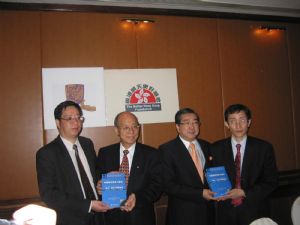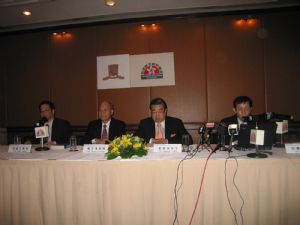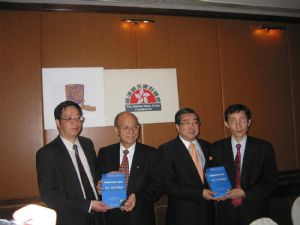The 2006 China Urban Competitiveness Study (Hong Kong) was organized by The Better Hong Kong Foundation, and co-organized by the Institute of Finance and Trade Economics, the Chinese Academy of Social Sciences and the Hong Kong Institute of Asia-Pacific Studies, at the Chinese University of Hong Kong. “The 2006 Blue Book on China Urban Competitiveness”, the 4th annual report in the series, was published in March 2006. The project was led by Dr Ni Pengfei at the Chinese Academy of Social Sciences. The report this year covered Hong Kong, Macau and – for the first time – nine cities in Taiwan, with contributions from about 100 scholars from Mainland China, Taiwan, Hong Kong and Macau.
The report identified the core advantages of 200 Chinese cities, and ranked their urban competitiveness based on various indicators. The top 20 cities were: Hong Kong, Taipei, Shanghai, Beijing, Shenzhen, Guangzhou, Kaohsiung, Macau, Hsinchu, Chilung, Ningbo, Suzhou, Tainan, Tianjin, Xiamen, Dalian, Wuxi, Shenyang and Qingdao.
The report also compared the competitiveness of 15 “Urban Clusters” (UC). The top five were: Yangtze River Delta UC, Pearl River Delta UC, Beijing-Tianjin-Hebei UC, Shandong Peninsula UC, Middle and South Liaoning UC. The competitiveness of the Pearl River Delta UC, which includes Hong Kong, closely followed that of the Yangtze River Delta UC.
The theme of this year’s report was “The Housing Market: The Barometer of Urban China”, and featured detailed analyses of housing markets and their impact on urban competitiveness. The report revealed that the real estate market in 35 large and medium cities was in an unhealthy state.
The Hong Kong case was analyzed by Professor Shen Jianfa and his colleagues at The Chinese University of Hong Kong. Due to continuous economic growth, the real estate industry in Hong Kong was strong, and real estate prices had been rising for some time, despite some fluctuations. The real estate industry made significant contributions to government revenue, GDP, employment and the financial sector. Expensive housing and office rents raised the prices of Hong Kong products and services, and labour intensive industries had to move to low-cost areas as a result. But the urban competitiveness of Hong Kong was not affected, as strong and competitive industries – such as financial, trade and logistics services – have emerged in Hong Kong since the 1980s. Without these industries and their competitiveness, high real estate prices would have affected the urban competitiveness of Hong Kong. Sustaining Hong Kong’s emergent industries was critical for it to stay competitively ahead of other cities.

Foundation co-organized Institute of Finance and Trade Economics of the Chinese Academy of Social Sciences and the Chinese University of HK released《The 2006 Blue Book on China Urban Competitiveness》Study

Dr. Ni Pengfei (first from right) presented the content of the Study


